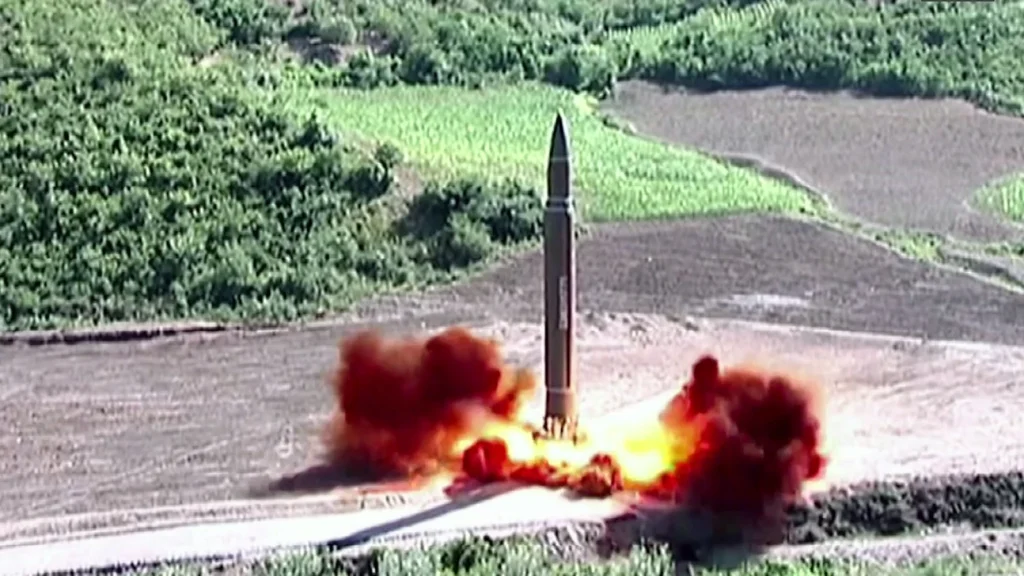As part of bolstering its anti-missile defence, Japan will deploy high-altitude drones with ultra-long endurance in the skies. Drones will offer detection, tracking and targeting of approaching missiles, even hypersonic ones. In the meantime, the European business Airbus HAPS started marketing solar-powered Zephyr stratospheric aircraft in the Japanese market.
Using the Zephyr stratospheric platform, Airbus HAPS and the Japanese business Space Compass will provide 4G/5G mobile communication and Earth surface observation services.
Zephyr is a member of the family of so-called “pseudo-satellites,” or platforms that combine the benefits of aeroplanes and satellites. On the move for weeks or months at an altitude of 20,000 metres or higher, these devices may make direct radio connections between locations more than 1,000 kilometres apart.
Role of Pseudo-satellites
Pseudo-satellites also include the British high-altitude drone PHASA-35 (Persistent High Altitude Solar Aircraft) from BAE Systems or the Chinese Rainbow from CAAA (China Academy of Aerospace Aerodynamics) or India’s high-altitude pseudo satellite (HAPS).
Although the debut of Airbus HAPS in Japan is in no way linked to Tokyo’s goal of introducing drones capable of detecting enemy missiles, the Zephyr is an excellent platform for this mission. This year, the Zephyr S (Zephyr 8), weighing only 75 kilograms, lasted 64 days in the air. Simultaneously, it was flying at an altitude of over 20,000 feet, 3000 metres below the height ceiling of 23,000 meters. At such heights, the environment is extremely stable; the greatest risk for this little aircraft is traversing the tumultuous troposphere.
The record was set in the United States, where the Zephyr S was tested by the US Army Future Command (AFC). Zephyr S flew over the southern United States, the Gulf of Mexico, and South America for two months.
Japan and the United States, therefore, wish to outfit ultra-long-endurance, high-altitude drones with intelligence, surveillance, reconnaissance, navigation, and communication capabilities.

Michael Monteleone, APNT/Space team leader at AFC, said in a statement, “This experimentation allows us to build on this knowledge and demonstrate multiple payload types, fully explore the military utility of stratospheric operations, and advance the areas of depth sensing, long-range targeting, and resilient communications.” Very long-endurance unmanned platforms can provide considerable military capabilities and boost confidence as part of a layered, diverse military architecture.
Stratospheric drones can serve as platforms at a high altitude for Earth observation, communication, and navigation. Pseudo-satellites can be equipped with optoelectronic sensors, radars, electronic reconnaissance tools, communication and navigation systems, etc. The employment of drones in navigation/communication warfare is crucial Because aircraft can give accurate navigation even in areas with significant electronic warfare effects, which is crucial for guiding precision weapons or ensuring communication between ground forces, for instance.
The Starlink constellation can be utilised to transmit data from the stratospheric aircraft to the headquarters. Thus, it can control and receive information from dozens or even hundreds of aeroplanes.
The United States will deploy stratospheric drones as part of the worldwide ISR network’s three-layer design. At the top lies the “space layer” – these satellites orbiting the Earth in varied orbits. In the atmosphere, both manned and unmanned aircraft comprise the “air layer.” This includes drones in the stratosphere. The lowest layer is the “ground layer,” which consists mostly of short- and long-range radars and various sensors positioned on the ground.
These ISR layers are backed by a communication layer, ensuring bidirectional data transfer. Again, we must remind you that constructing such intricate survey networks is impossible without the Starlink satellite constellation. Similar networks utilise the same underlying premise. However, we can be certain that SpaceX’s Falcon 9 or Starship rocket will launch these competing networks.
All of this is only possible with the deployment of artificial intelligence elements, i.e. machine data processing, which enables the filtering and search for relevant patterns in massive amounts of data.
Japan’s plans
Japan plans to deploy unmanned stratospheric planes as part of its anti-missile defence as early as 2027. This indicates the need to employ existing established and tested platforms.
Drones will be crucial in detecting hypersonic weapons, particularly hypersonic gliders that fly on a specified flat non-ballistic trajectory. This enables them to travel significantly below the radar horizon of anti-missile defence radars. Japan’s existing missile defence system may need help to identify Chinese or North Korean hypersonic missiles in advance. Stratospheric drones, with a horizon of 510 kilometres at the height of 20,000 metres, are the solution to several problems.
Tokyo aims to utilise dozens of long-endurance drones outfitted with infrared sensors to construct a detection network capable of scanning the surroundings of Japanese territory, including Japanese islands in the East China Sea, 24 hours a day, seven days a week. Japan also aims to construct a “space layer” by launching 50 tiny spy satellites with infrared sensors beginning next year.

The Japanese are constructing a “space layer” alongside the United States. In addition, as part of a defence against hypersonic missiles, the Pentagon will deploy 1,000 satellites with infrared sensors into low Earth orbit. The only rocket currently capable of achieving this is SpaceX’s Falcon 9. Lower orbits (and, consequently, shorter detection distances) permit the employment of considerably smaller infrared sensors and, hence, smaller satellites with reduced electrical power usage.
It is interesting how the financial democratisation of space cargo transport, SpaceX’s accomplishment, enables the development of hitherto unimaginable military capabilities. There is no need for billions of dollars. Starlink is not simply a communications satellite; it is also a satellite platform enabling the creation of a global network of surveillance and communications satellites and globally deployed stratospheric drones.
